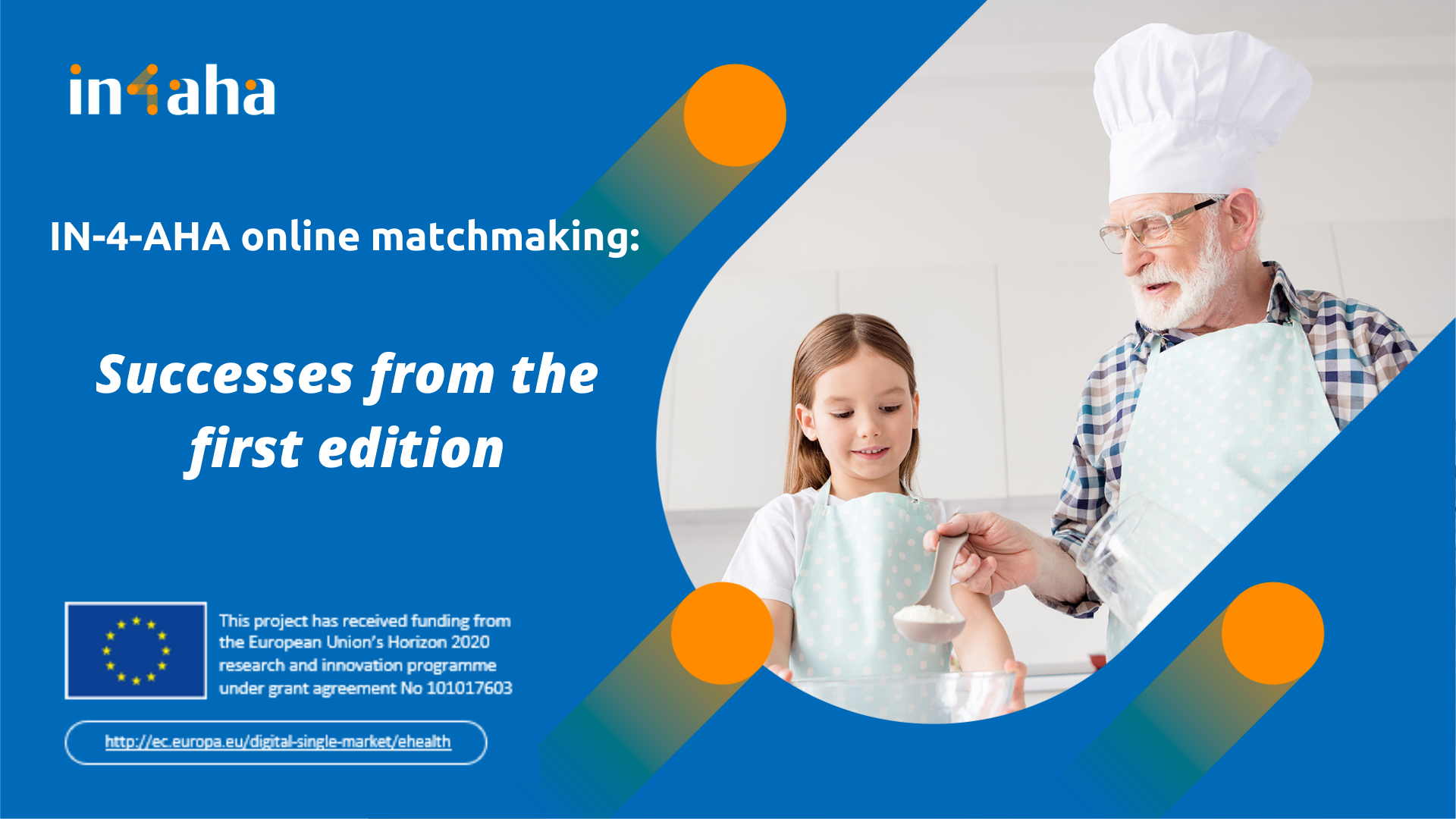Designer of the Estonian Public Sector Innovation Team (Innotiim), Daniel Kotsjuba, spoke at the IN-4-AHA seminar on 18 January dedicated to methods co-creation process in the AHA field, about how co-creation has been implemented in the public sector. The seminar is available for replay here.
The Public Sector Innovation Team is tasked with making Estonia’s public services more user-friendly and people-centric in cooperation with ministries and divisions. The team also organises service design trainings for public sector officials. In his introduction of the Public Sector Innovation Team and what it does, Daniel brought out that the end-user is often forgotten when designing products or services and the focus is on the needs of the provider. As a result of such design process, the end-user might not start to use the product or service at all. The main objective of the Public Sector Innovation Team is to represent the interests and needs of the user in the design process.
According to Daniel, they have been asked repeatedly where service design can and cannot be used. He believes the real question should be about the organisation’s approach to the process. “If you approach things with bias, if you’re not open and have already made up your mind on certain things, you risk not getting the full benefit of the process,” says Daniel. “You shouldn’t be afraid and you should have the support of the organisation. As a team, we have to see to it that the voices of everyone involved are heard, and our very important role in the design process is to stand up for the user’s perspective and needs. The meaning of ‘user’ may vary from project to project.”
Pathway design for cancer patients
One of the first projects of the Public Sector Innovation Team was to design the care pathway of a cancer patient for North Estonia Medical Centre. The aim of the project was to analyse the pathway undertaken by a patient and to make improvements based on the analysis. According to Daniel, the Public Sector Innovation Team took a look at the entire pathway, including the time before and after the patient’s stay at the hospital. The patient’s pathway before the hospital determines what takes place at the hospital.
To map the path, several personas were developed to represent cancer patients. The team tried to map out the various ways people might end up taking the pathway. This part is always very important in projects, as it provides an opportunity to visualise abstract issues in concrete terms and discuss what makes a specific step on the pathway a high or low point for the patient.
The process revealed that a patient’s need for support begins while they are still awaiting a diagnosis. This led to the question: how to offer support to someone who has yet to enter the system, strictly speaking. This period also proved difficult for loved ones.
Another important finding was that patients do not have sufficient awareness and an overview of the care pathway. This might be the first time in someone’s life that they have to deal more closely with doctors and they might not know exactly what they should be doing.
It was also revealed that treatment lacks comprehensive support. People want to be seen as a person in their own right, not just as a cancer patient, because their lives are not defined by the disease. However, as Daniel points out, we often see processes that are designed to treat persons first and foremost as cancer patients and only then as a whole human being.
Conclusions made
As a result of the design process, it was concluded that a new post – nurse coordinator – should be created in the medical system. A nurse coordinator would act as a mediator between the medical treatment team and the patient, keeping an eye on what the patient is doing. In addition, it was found that support specialists should be more involved in the care pathway, as this would significantly improve the patient’s compliance as well as treatment results. Third, it was brought out that communication between patients, their relatives and the medical team could be more effective.
According to Daniel, we can now say that this project and others like it have helped bring about a shift to look at things more from the patient’s point of view and, as a result, certain processes have either already changed or are changing.
According to him, the overall mindset is changing; Daniel and his team have increasingly less explaining to do as to why it is important to consider the end-user perspective. “Luckily, we have seen a big positive change in this respect, but we also have to realize that we are dealing with a process and changes take time,” says Daniel.


